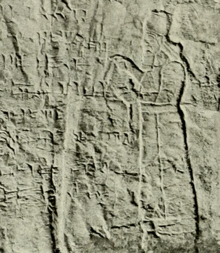Mesopotamia
6. The Assyrian Empire
6.3. Tiglath Pileser and the Neo-Assyrian Empire
After the death of Tukulti-Ninurta I, the Assyrian Empire was neither expanding nor falling apart. While the whole of the Near East fell into a 'dark age' following the so-called Bronze Age Collapse of c. 1200 BCE, Ashur remained relatively intact. Unlike other civilizations in the region which suffered a complete collapse, the Assyrians seem to stop its movement forward. The empire certainly cannot be said to have 'stagnated', because the culture, including the emphasis on military campaign and the value of conquest, continued; however, there was no significant expansion of the empire and civilization as it was under Tukulti-Ninurta I.
This all changed with the rise of Tiglath Pileser I to the throne (reigned c. 1115-1076 BCE). According to Leick:
"He was one of the most important Assyrian kings of this period, largely because of his wide-ranging military campaigns, his enthusiasm for building projects, and his interest in cuneiform tablet collections. He campaigned widely in Anatolia, where he subjugated numerous peoples, and ventured as far as the Mediterranean Sea. In the capital city, Assur, he built a new palace and established a library, which held numerous tablets on all kinds of scholarly subjects. He also issued a legal decree, the so-called Middle Assyrian Laws, and wrote the first royal annals. He was also one of the first Assyrian kings to commission parks and gardens stocked with foreign and native trees and plants." (171)
Tiglath Pileser I revived the economy and the military through his campaigns, adding more resources and skilled populations to the Assyrian Empire. Literacy and the arts flourished, and the preservation initiative the king took regarding cuneiform tablets would serve as the model for the later ruler, Ashurbanipal’s, famous library at Nineveh. Upon Tiglath Pileser I’s death, his son, Asharid-apal-ekur, took the throne and reigned for two years during which time he continued his father’s policies. He was succeeded by his brother Ashur-bel-Kala who initially reigned successfully until the civil war.
Although the rebellion was crushed and the participants executed, the turmoil allowed certain regions that had been tightly held by Assyria to break free and among these was the area known as Eber Nari (modern day Syria, Lebanon, and Israel), which had been particularly important to the empire because of the well-established sea ports along the coast. The Aramaeans now held Eber Nari and began steping towards the rest of the empire. At this same time, the Amorites of Babylon and the city of Mari asserted themselves and tried to break the hold of the empire.
